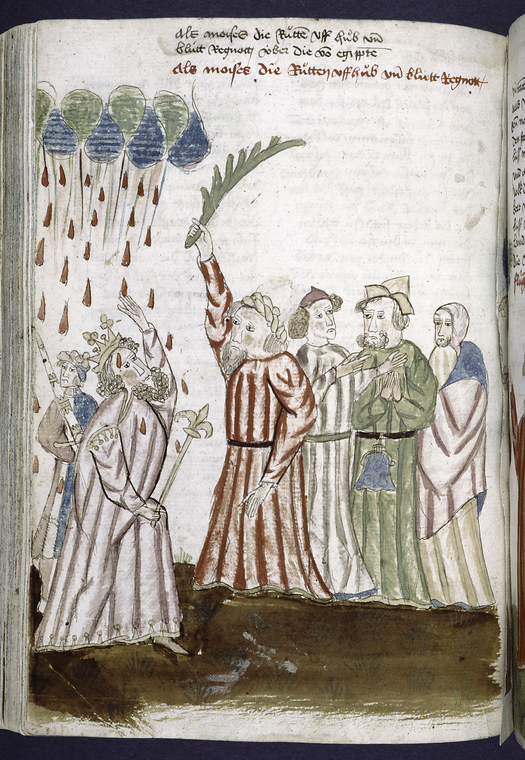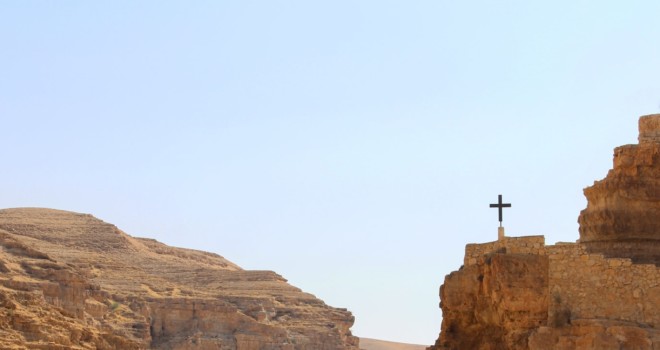Plagues have a way of stripping away what is
superfluous, revealing the naked truth.
In the biblical account of the plagues that
decimated Egypt, the plagues exposed the civilization’s false gods and their
utter impotence in the face of the one true God (see Exodus 7 through 11).
That might not be obvious from the text. On the
surface, it seems like a clash between pharaoh and Moses, who has God on his
side. The clue is in the plagues themselves. Bloody water, boils, hail, and
locusts, among others, may seem like the perfect things to inflict as plagues.
But biblical commentators point out that they have one other thing in common:
many of them are used in depictions of the Egyptian gods.
For example, a frog was how Heket, the god of
fertility, appeared in ancient Egyptian art. Frogs were viewed as sacred
objects (see here
and here).
In making the frogs appear, God was demonstrating His superiority to this false
God. The elimination of the plague of the frogs, God affirmed His supremacy:
ultimately it was He who was the source of life, not the Egyptian fertility
god.
Some of the other plagues correspond not to images
of ancient deities but instead are associated with their domains. Take the Nile
god, Hapi. Turning the river water into blood exposed his lack of authority of
his supposed domain. God was in control, not this false god. The same idea goes
for the boils and Isis, the god of healing; the gnats from the dust and Geb,
the earth deity; and darkness and Ra, who was the sun god.
Below is a table showing each plague and the
associated ancient Egyptian deity.
| Plague | Corresponding Deity |
| 1. Water turned to blood. | 1. Hapi, the Nile god. |
| 2. The frogs. | 2. Heket, the god of fertility who had the head of a frog. |
| 3. Gnats from the dust of the earth. | 3. Geb, the god of the earth. |
| 4. Swarm of flies. | 4. Khepri, god of creation and rebirth, who was fly-headed. |
| 5. Death of cattle. | 5. Hathor god of protection who had the head of a cow. |
| 6. Boils. | 6. Isis, god of healing. |
| 7. Hail and lightning. | 7. Nut, the sky god. |
| 8. Locusts. | 8. Seth, the deity of storms and other disasters. |
| 9. Darkness. | 9. Ra the god associated with the sun. |
| 10. Death of the firstborn. | 10. Affected pharaoh, who was viewed as a deity. |
As the above table makes clear, one by one, key
Egyptian deities were shown to be impotent. The bloody Nile and intense
darkness must have been particularly shocking, given the importance of the
river and the god Ra in ancient Egypt.
In material terms, the Egyptians saw the natural world around them, with its seemingly predictable rhythms, descend into chaos. They realized that they could not count on their own good health, the wellbeing of their livestock, or the life-giving rivers of the Nile. Today, we take the rising of the sun as a given, but the Egyptians couldn’t even count on that during the ninth plague, when darkness persisted for three days. (In fact, the text says the darkness was so intense that one could “feel” it.)
The plagues also exploded the myth that the
Egyptians could control nature. Ancient Egyptian civilization was founded on
the premise that it was possible to manipulate nature—that through a system of
canals and highly developed agricultural practices that a society could
flourish in a desert. The plagues revealed that the Egyptians’ control of
nature was just an illusion.

The plagues took almost everything away from the
Egyptians—their false gods, their natural resources, and their sense of
control. Plagues have a way of stripping things down to their bare essentials.
What was left when it was all over? What truth did the plagues point to? As God told Moses to tell pharaoh at the beginning of it all, “This is how you will know that I am the LORD” (Exodus 7:17). Only God could bring the locusts and blow them away. Only the true Lord of creation could withhold the light of the sun. Only God was God and only He was in control of nature.
We know the plagues were sent by God because the
Bible says it. In the current pandemic, absent some special revelation, we do
not why God has allowed it. But, just as with the biblical plagues, the
coronavirus crisis has a way of exposing the truth. What false gods did we once
worship? What did we take for granted about nature that we can’t any longer?
What material resources have we now realized are so fragile? What or on whom
can we truly lean upon in these difficult times?
Plagues have a way of exposing the truth. May we have the courage to see it.
✠
Photo by Iva Rajović on Unsplash












